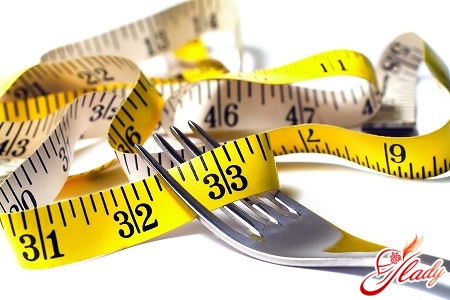 Practically everyone knows the word "kilocalorie". The vast majority of people who watch their weight know that in order to keep themselves "in shape" these very kilocalories must be counted. Moreover, many - someone more, someone less successful - even are engaged in this calculation. However, very often, despite the "scientific" approach to the problem, the long-awaited effect - as a rule, it is a matter of weight loss - never comes. What is the secret here? And how much does a person need these kilocalories per day in order to have a beautiful and slender figure? Let's understand. First you need to find out what is hidden behind this word - "calorie". Perhaps the most "feminine" definition was given by the German designer Helen Hennemann: "Calories ... these are the little dirty people that come at night ... and they cover your clothes." It's hard to argue ... and, really, - dirty people! But still, seriously? Ironically, the concept of "calorie" is inextricably linked with water. However, nothing surprising. Water in many physical processes acts as a "basic" determinant. Take, for example, the temperature. After all, everyone knows that the freezing point of water is taken as 0 degrees, and boiling - for 100. That's how we are used to determine the temperature - focusing on water. Same with calories.
Practically everyone knows the word "kilocalorie". The vast majority of people who watch their weight know that in order to keep themselves "in shape" these very kilocalories must be counted. Moreover, many - someone more, someone less successful - even are engaged in this calculation. However, very often, despite the "scientific" approach to the problem, the long-awaited effect - as a rule, it is a matter of weight loss - never comes. What is the secret here? And how much does a person need these kilocalories per day in order to have a beautiful and slender figure? Let's understand. First you need to find out what is hidden behind this word - "calorie". Perhaps the most "feminine" definition was given by the German designer Helen Hennemann: "Calories ... these are the little dirty people that come at night ... and they cover your clothes." It's hard to argue ... and, really, - dirty people! But still, seriously? Ironically, the concept of "calorie" is inextricably linked with water. However, nothing surprising. Water in many physical processes acts as a "basic" determinant. Take, for example, the temperature. After all, everyone knows that the freezing point of water is taken as 0 degrees, and boiling - for 100. That's how we are used to determine the temperature - focusing on water. Same with calories.
What are calories?
Imagine that you put on two burners,working in the same mode, pans with different amounts of water. Which one will boil faster? That's right, the one with less water. But if the capacity of one of the burners increases, the situation will change. And the pan, in which there is more water, the first can boil. This is where we came to the concept of "calorie". Calorie is the amount of heat that is needed to heat one gram of water by one degree Celsius. A kilocalorie, as you might guess, is a thousand calories. Thus, it turns out that calorie is not a vitamin, not fat, not protein and, in general, not a substance, as many believe. This is just a unit of energy. So where does the fight against excess weight? Is it possible to lose weight or gain weight from the units of measurement? Of course not. But communication, after all, there is. After all, what is heat? This is the energy that is released when fuel is burned. A "fuel" for the human body is food. They are "burned" in the process of digestion and provide us with the necessary energy. Saying the phrase: "a person needs so many calories a day," they mean that to maintain all the processes, the body must receive a certain amount of energy. And now let us recall the basics of physics, or more precisely, the law of conservation. In accordance with it, energy can not arise "out of nothing" and disappear "into nowhere". Therefore, if a person does not use what has already arrived in his body, then - be sure! - all this will be postponed in the form of "reserves for the future". That is, that hateful fat with which the majority tries to fight. This is life - you can not argue with the laws of nature. This leads to a very simple conclusion: in order to keep your weight unchanged, you should spend exactly as many kilocalories as you received. Well, if the goal is to lose weight, then the amount of "wasted" should exceed the amount of "arrived". Then the body will have nothing else but to use the reserves postponed "for a rainy day," and the fat will inevitably begin to "melt". That's why people who watch their weight, pay attention to the energy value - "caloric value" - products. 
Simple calculations
It would seem that everything is very simple. However, there is one problem - people are very different from each other. Everyone has different height, age, body weight. Moreover, everyone leads a different lifestyle. Someone is moving a lot and doing sports. Others - the most extreme "journey" - from the office chair to the soft home sofa. Therefore, the number of kilocalories all need different. How can you calculate how many kilocalories you need to "eat" a particular person during the day? The daily rate can be determined in several ways. Perhaps one of the most popular to date is the Muffin-Geor method, which was developed back in 1990. This formula is considered the most accurate. In order to better understand the essence of a little theoretical knowledge. The basic concept of the formula is "basic exchange". What is it? Almost everyone knows that in the human body, constantly - even when we are sleeping - certain processes and chemical reactions take place that support vital activity. Thanks to them, the heart, lungs, circulates blood, nails and hair grow, etc. And all this requires energy. But how much does it need? The more active life we lead, the more "fuel" the body needs. The least energy is spent in a state of rest - during sleep. This is the minimum quantity and is taken as a "reference point". It is usually called the main metabolism. This indicator depends on several factors - sex, age, growth and physical activity. This is understandable - the energy costs, and therefore the daily rate of kilocalories, a young "hard-working" man engaged in physical work is much more than a young slender girl, spending days at the computer. So that's it. In order to use the Muffin-Geor formula and calculate the "female" basic exchange (OO), it is necessary:
All. The main exchange is determined. The resulting number is the daily rate of kilocalories that your body needs for normal work. And this is provided that you will lie in bed for 24 hours and doze off. In mathematical terms, this formula looks like this:
- GS = 9.99 x weight + 6.25 x height - 4.92 x age -161.
Next - the next step. Unfortunately, - however, probably, all the same, fortunately! - "lazy" day and night for several weeks or months will not work. Therefore, the "real" daily rate will differ from the number obtained earlier. Here the role of your physical activity plays a big role. So:
- if you are conducting a "sedentary" way of life, multiply the OO value by 1.2;
- if you occasionally - once or twice a week - go in for sports, then multiply the GS by 1.375;
- if the lessons are more regular, - from three to five times - then the coefficient will be 1.55;
- can not you live without exercise for a day? Multiply by 1,725;
- well, and with intensive strength training, conducted twice a day - in the morning and in the evening - the coefficient will be 1.9.
Counted? Good. The resulting number is your individual daily calorie intake. That's what you need to "eat" daily, in order to maintain the weight that you are "proud to wear" at the moment. Well, if you want to lose weight? How will the norm change then? It is generally believed that without harm to health, calorie content can be reduced by 20%, compared to the usual diet for you. In order to find out how many kilocalories you can cut your diet, just multiply the result obtained earlier by 0.8. It should be kept in mind that a more drastic reduction is quite dangerous. This can lead to the fact that the metabolism in the body slows down and instead of the desired result you will get a lot of health problems. Another way to determine how many kilocalories you need to "consume" per day will surely please those on whom sophisticated mathematical calculations drive boredom or boredom. It's very simple. The daily norm is calculated with the help of a single mathematical action. Just multiply your weight by 28. This number will allow you to save what you already have. If you need to lose weight, then act by analogy. Multiply not the real, but the desired weight. Despite the fact that this formula is the simplest and does not take into account your age or lifestyle, it is recommended by many fitness trainers. 
Do not harm your body
It seems that everything is very easy and simple. But, doing all these calculations, you need to remember that you should not abuse low-calorie diets. Their continued adherence can lead to the fact that the body will begin to use internal resources. And, "pumping out" the energy, he will not be fat, as everyone would like, but from the muscles. And this, as you know, is not at all useful. Nutritionists believe that the caloric content of a daily diet should be at least 1200-1500 kcal. And if you decide to "sit down" on a "tougher" diet, then you can do this only with approval - and under supervision! - the doctor. There is one more thing. Our body is very smart. If you do not provide him with the necessary amount of calories, he "decides" that "hard times have come" and "will switch on the economy mode". As a result, the metabolism will slow down and fats will be burned even worse than normal. By the way, that's why often enough during diets comes the so-called "plateau" - a period when the weight ceases to decrease, no matter how hard you try. And what can be worse than to limit yourself in everything and, at the same time, not to see any effect? And if you add to this all the "delights" of delayed metabolism, - headaches, depression, loss of strength and a constant sense of cold - it becomes clear that such experiments on yourself and your beloved are simply unacceptable. It is better to approach everything sensibly and deliberately. Do not be lazy - choose from the existing ones or make a self-suiting balanced diet. Be sure to consult a doctor. And only after that start to follow it. At you all will necessarily turn out! You'll see. We advise you to read:









